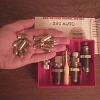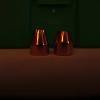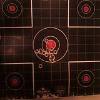LNF150
Member
- Joined
- Jul 23, 2018
- Messages
- 84
I use the .380 lee dies. Haven't had any problems. Really careful in the initial set up with the powder drop/flare die and the seating die. I don't use much (or very much) flare on the outer lip. The outer edge of the base of the bullet will barely touch any of the inner lip edge of the cartridge. It's a finesse game. Then I will switch over to the seating die and gently seat a couple of bullets to see if I need a little more or less flare. What I've found is that the lip of the brass (seems to) springs back just a minute amount from when it leaves the flare die to seating the bullet. A very tiny amount of added flare compensates for that but having that springiness also helps the lip hold onto the bullet.







